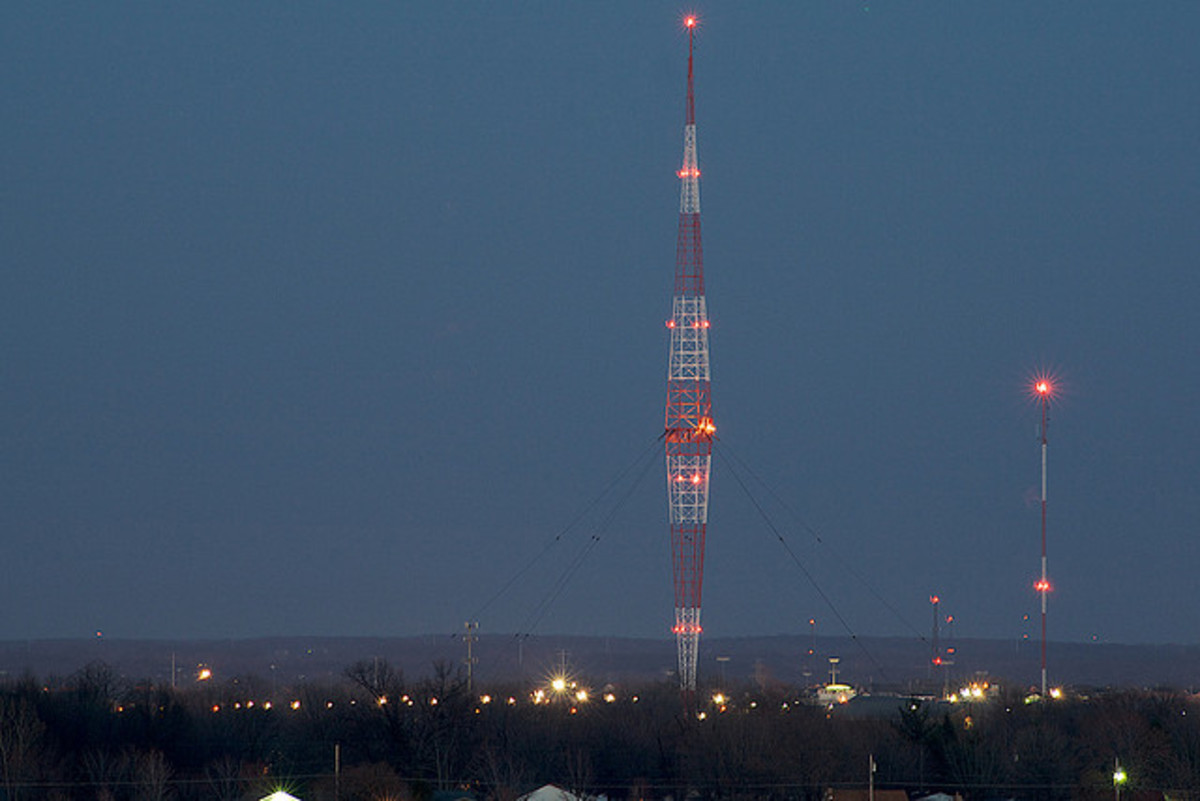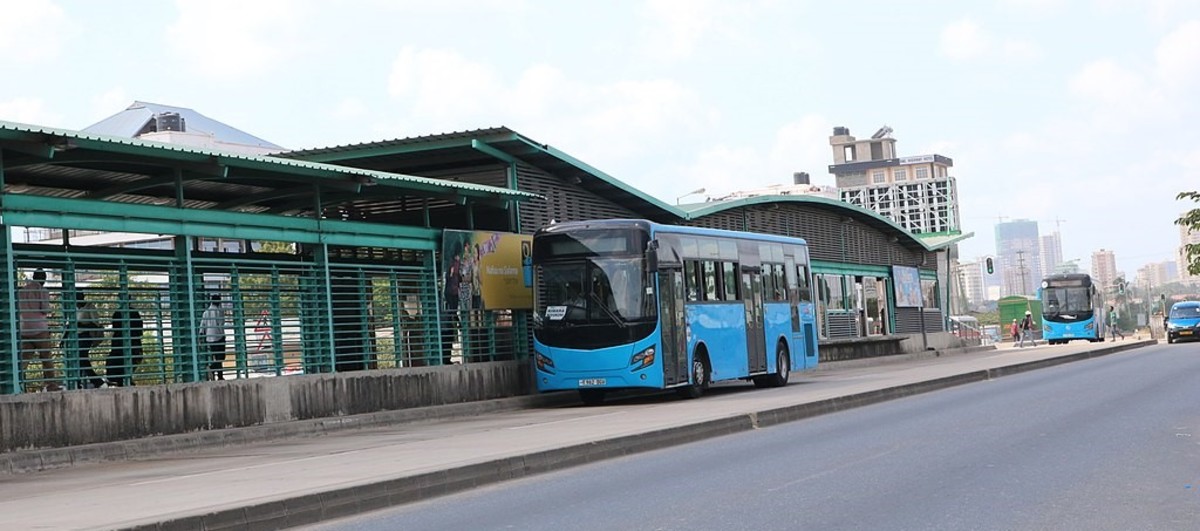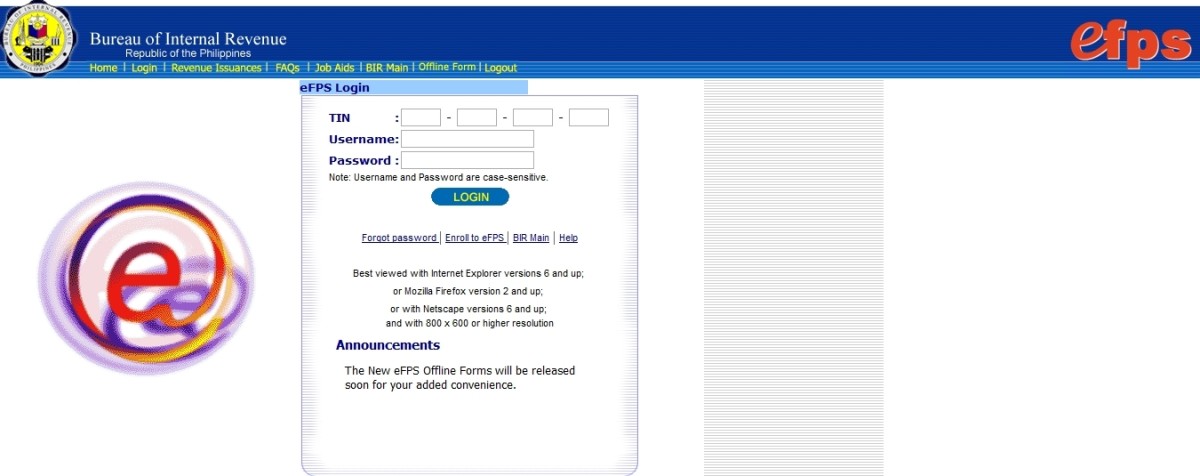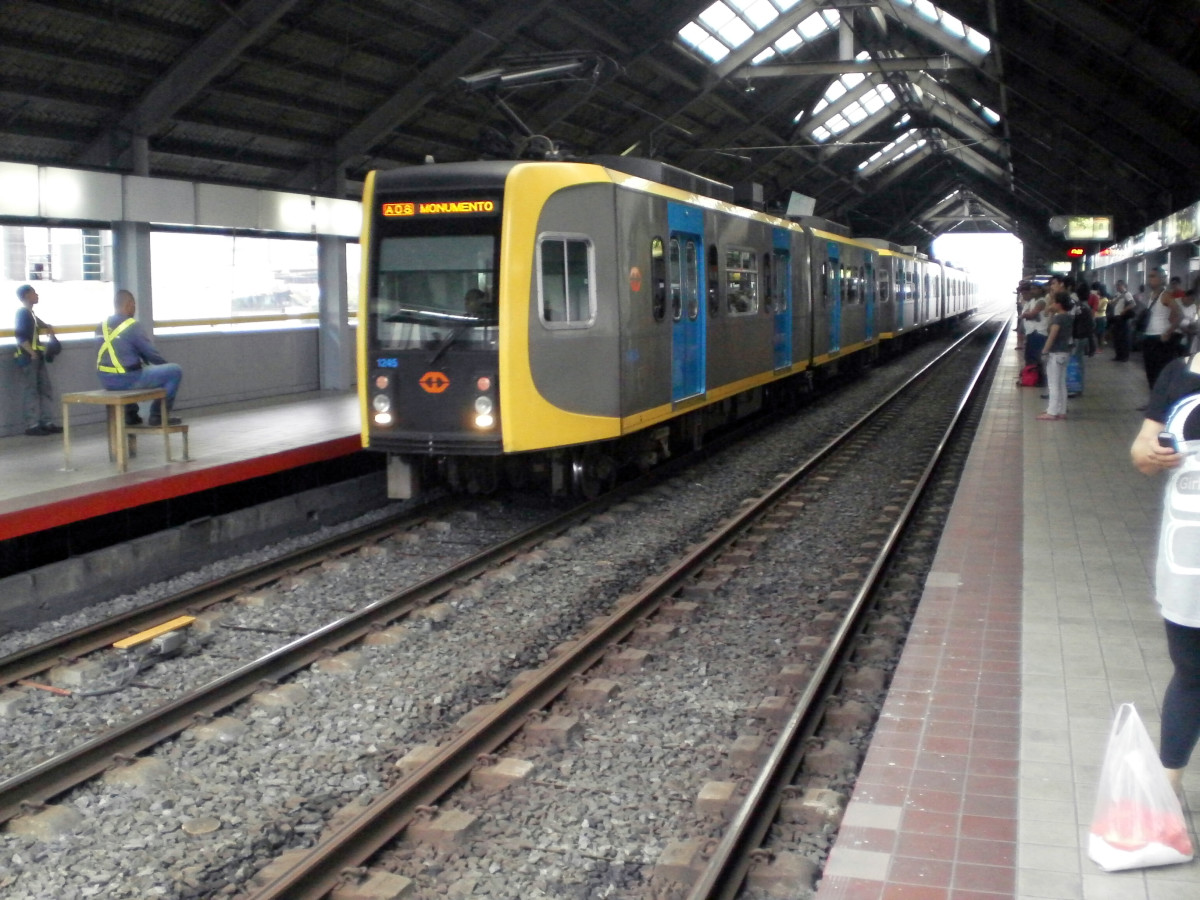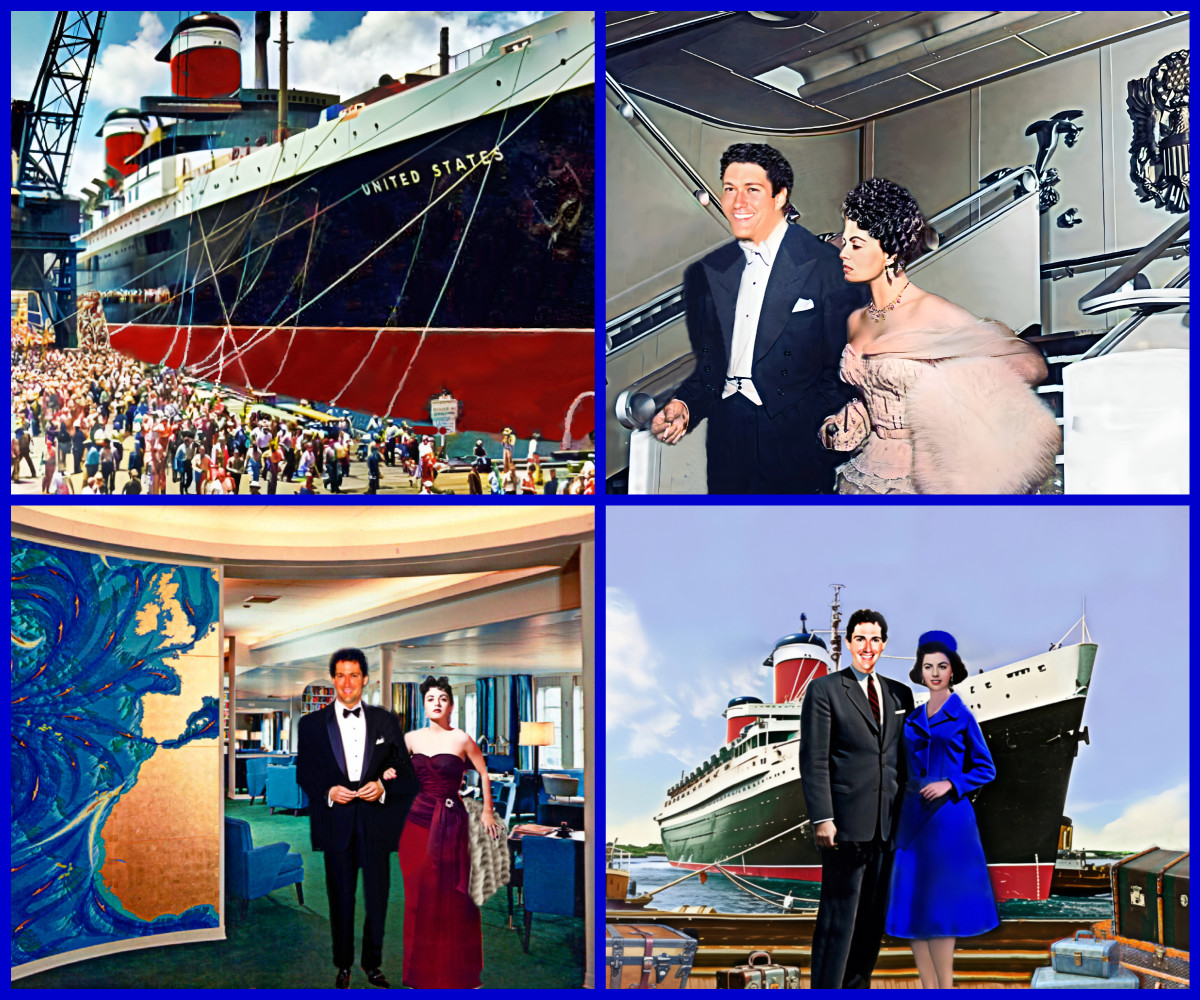Cincinnati — Rail Transit Returns With New Streetcar System
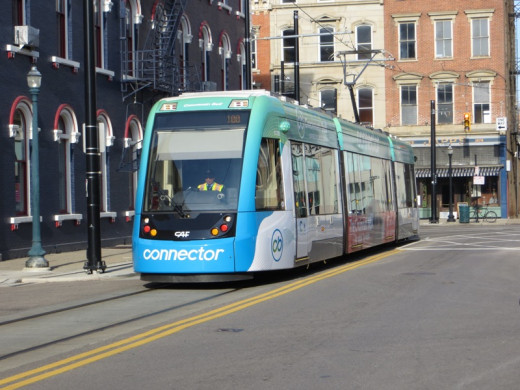
Did you know that Cincinnati has a subway? Yep — 2.2 miles of it, bought and paid for, and never used! Instead of buying rapid transit cars to run in it, the city decided to put its money into building boulevards and freeways for the motor age, instead. (There's an excellent book on Cincinnati's ill-fated rapid transit project, which I have read and can strongly recommend – check out The Cincinnati Subway link at the bottom of this article.)
But Cincy did have surface rail transit — an electric streetcar network that extended up to 222 track-miles throughout the metro area, running hundreds of efficient, user-friendly streetcars. Once the mainstay of urban Cincinnati's mobility system (with sizable stretches on private right-of-way), the last remnants of that massive network of lines were scrapped in 1951. The electric wires were dismantled, the tracks were paved over, and those private rights-of-way were converted to ... you guessed it: more roads!
But that's not the end of Cincinnati's rail transit story ...
Back to the future
Now, in the 21st century, choked by traffic congestion and parking problems, Cincinnati is taking itself back to the future with a small but crucial investment in a modern electric streetcar line approved by 52% of voters in a 2011 ballot and opened on 9 September 2016. The modern electric streetcar line, serving the city's urban core, currently operates approximately 1.8 miles in each direction in an elongated north-south loop totaling about 3.6 miles. (See map below.)
Envisioned as the first phase of an eventual citywide system, this starter line connects Cincinnati's Downtown to Findlay Market and the Over-the-Rhine Historic District, linking a number of major activity points.
• Government Square
• Fountain Square
• Contemporary Arts Center
• Public Library
• Aronoff Center
• Horseshoe Casino
• Gateway Quarter
• School for the Creative and Performing Arts
• Music Hall
• Washington Park
The total project cost for this first segment totaled $148 million (2016), funded by a combination of public and private sources. In 2019, before the Covid-19 pandemic, ridership was averaging about 1,100 trips per day. The line's annual operating cost in 2020 was about $2.5 million, covered by fare revenue plus funding from casino revenue, parking meters, and sponsorship of stations.
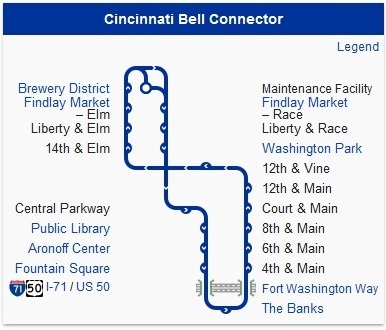
Catalyst for urban development
In addition to providing residents with better access to the bus system, the new system is stimulating significantly greater mixed-use and higher-density development along its route. And, particularly oriented to a core-area population that's less reliant on personal motor vehicles, the streetcar line is expected to "reinforce the walkability of the City", according to Cincinnati's Web information on the project.
Planners expect new economic development from this major public investment to continue, including the development of numerous new businesses along the tracks "because owners can count on a steady stream of customers to pass by each day." In contrast, says the City's website, "Buses and other transportation-oriented investments don't have a proven record of attracting such an influx of business."
The new system is also boosting local efforts to renovate run-down sections of the central city. An economic study identified more than 500 vacant buildings in Cincinnati's historic but dilapidated Over-the-Rhine neighborhood. These buildings are undergoing rehab as the streetcar project continues to stimulate investment and is expected to help attract residents and businesses into the rehabbed facilities.
Hopefully, this small starter line will represent the first step in a renewed and much more enduring friendship between Cincinnatians and electric rail transit that will last far into the future.
Note: This article was modified slightly on 12 December 2011 to correct the reported length of the planned streetcar route.
Originally posted 2011/12/02. Updated 2011/12/12 and 2021/01/31.

